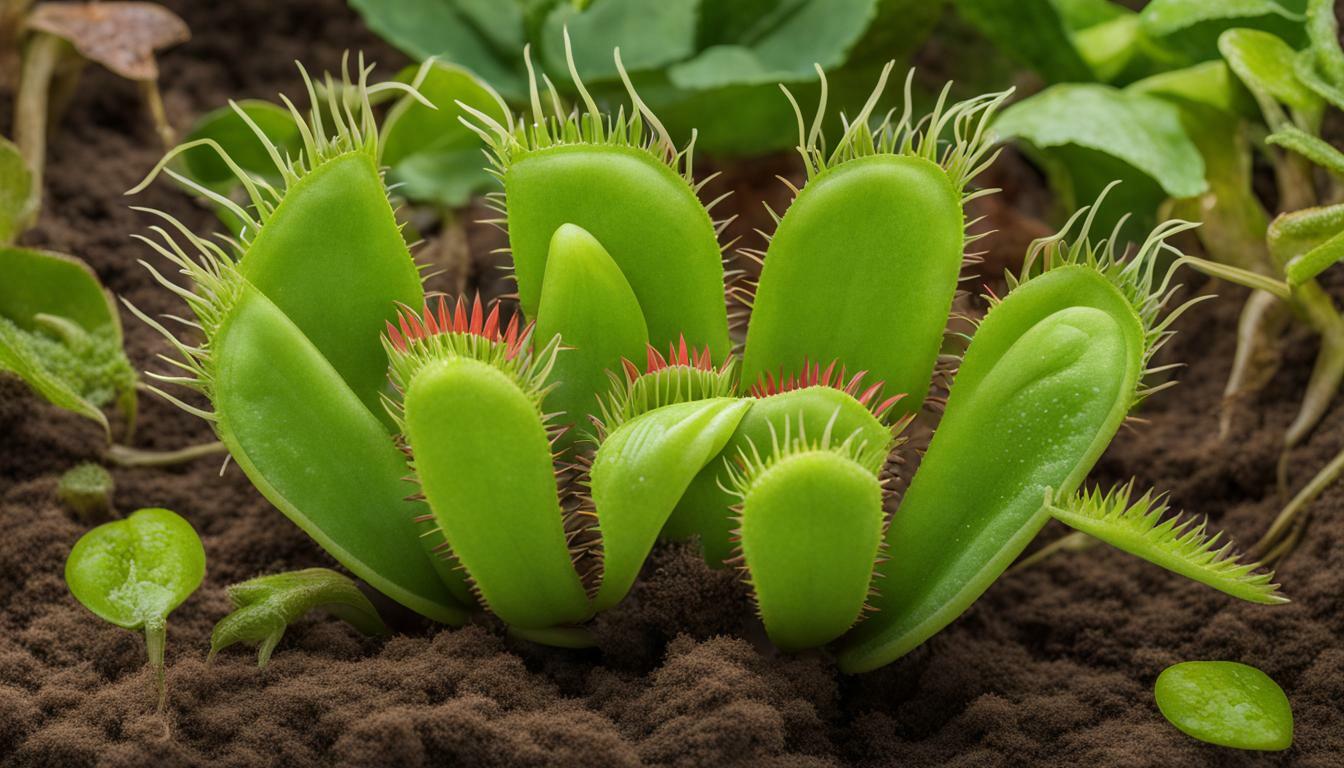If you are a Venus Flytrap enthusiast, you may have wondered whether the color of this carnivorous plant has any impact on its overall health. While it may seem like a small detail, the color of a Venus Flytrap can be an indicator of its well-being and provide insights into any potential issues that may be affecting it.
Key Takeaways:
- The color of a Venus Flytrap can be an indicator of its health.
- Various factors can affect the health of Venus Flytraps, including environmental conditions, nutrient availability, and proper care.
- Scientific research has been conducted to explore the relationship between color and the well-being of Venus Flytraps.
The Importance of Venus Flytrap Color in Health
If you are a Venus Flytrap enthusiast, you may have noticed that these fascinating plants come in a variety of colors, including green, red, and even black. But does the color of a Venus Flytrap affect its health? This is a question that has generated much interest and debate among plant enthusiasts and researchers alike.
While there is no definitive answer to this question, many experts suggest that the color of a Venus Flytrap may have some impact on its overall health and well-being. Some studies have suggested that certain color variations may be linked to specific health conditions or environmental factors.
For example, some researchers have found that Venus Flytraps with darker pigmentation may be more resilient to harsh sunlight and heat, as the extra pigmentation helps to protect the plants from damage. On the other hand, some green Venus Flytraps may require more sunlight to thrive, as they contain more chlorophyll for photosynthesis.
Overall, while the relationship between color and Venus Flytrap health is not yet fully understood, it is clear that color does play a role in the overall well-being of these unique plants. By paying attention to the color of your Venus Flytrap and understanding its specific needs, you can help ensure that it remains healthy and robust over time.
Factors Affecting Venus Flytrap Health
To ensure your Venus Flytrap remains healthy, it is essential to consider various factors that can impact its well-being. One of these factors may be the color of the plant, so it’s crucial to pay attention to this as well.
Environmental conditions play a significant role in the health of Venus Flytraps. These plants require high humidity and moist soil to thrive, so make sure you provide them with the right conditions. Avoid exposing your plant to direct sunlight as this can cause too much heat, and the plant may not be able to handle it.
Nutrient availability is another essential factor that affects Venus Flytrap health. These plants obtain nutrients by catching insects, so make sure you provide them with this food source. Try to avoid feeding them repeatedly with the same insect species, as this can cause imbalances in nutrient intake.
Proper care is crucial for the well-being of Venus Flytraps. Avoid disturbing or touching the traps as this can lead to damage and potential death of the plant. Keep them in a pot with proper drainage and ensure that the soil is always moist.
While the color of a Venus Flytrap may not be the most critical factor in its health, it’s still worth considering. Some studies suggest that certain color variations may affect the plant’s overall well-being. For example, a lack of red pigment in the traps may indicate a lack of proper nutrition, so make sure to provide your plant with the necessary nutrients.
Scientific Research on Venus Flytrap Color and Health
Several scientific studies have been conducted to investigate whether the color of a Venus Flytrap affects its well-being. One such study found that the red coloration of the trap leaves plays a crucial role in attracting prey towards the plant.
Another research study revealed that the color of the Venus Flytrap leaves can be influenced by environmental factors such as light and nutrient availability. This suggests that color may be an indicator of the plant’s overall health, with stressed plants exhibiting less vibrant colors.
Furthermore, scientists have explored the molecular mechanisms underlying the coloration of Venus Flytrap leaves. They’ve identified specific genes and pigments responsible for producing the red coloration, indicating a complex biochemical pathway that could have implications for the plant’s overall health.
While more research is needed to fully understand the role of color in the health of Venus Flytraps, these studies suggest that color may be a valuable indicator of the plant’s overall well-being. By monitoring changes in color, caretakers may be able to identify and address environmental stressors that could negatively impact the plant’s health.
Conclusion
So, does the color of a Venus Flytrap affect its health? After exploring various factors that can impact the well-being of these plants, including environmental conditions, nutrient availability, and proper care, it seems that the color of a Venus Flytrap may not have a significant direct impact on its health. While there are some anecdotal reports of certain color variations being linked with stronger or weaker plants, there is currently no scientific evidence to support these claims. Instead, it appears that the key to keeping your Venus Flytrap healthy is to provide it with the right conditions and care. That being said, it’s still important to monitor your Venus Flytrap’s color, as changes in pigmentation or discoloration can be a sign of other health issues. If you notice any changes in your plant’s appearance, be sure to investigate further and adjust its care as needed. Overall, by providing your Venus Flytrap with the proper care and attention, you can help ensure that it remains happy and healthy, regardless of its color.Will Touching a Venus Flytrap Harm Its Health?
When it comes to touching a venus flytrap: what to know is that it is best to avoid this action. Venus flytraps are delicate plants that rely on their leaves for capturing prey. Excessive touching can cause damage, hinder their ability to catch insects, and lead to a decline in overall health. It’s best to appreciate their unique qualities without physically interacting with them.
FAQ
Q: Does the color of a Venus Flytrap affect its health?
A: The color of a Venus Flytrap does not directly affect its health. Instead, factors such as environmental conditions, nutrient availability, and proper care play a more significant role in determining its overall well-being.
Q: What factors can affect the health of a Venus Flytrap?
A: Various factors can impact the health of a Venus Flytrap, including environmental conditions, such as temperature and humidity, nutrient availability, and providing proper care, such as maintaining adequate watering and light conditions.
Q: Is there any scientific research on the relationship between Venus Flytrap color and health?
A: While the color of a Venus Flytrap has been a topic of interest, there is currently limited scientific research specifically exploring the relationship between color and the well-being of these plants.
Q: Can I enhance the health of my Venus Flytrap by changing its color?
A: The color of a Venus Flytrap cannot be altered significantly, as it is determined genetically. Instead, focus on providing the plant with optimal growing conditions and proper care to enhance its overall health and well-being.










